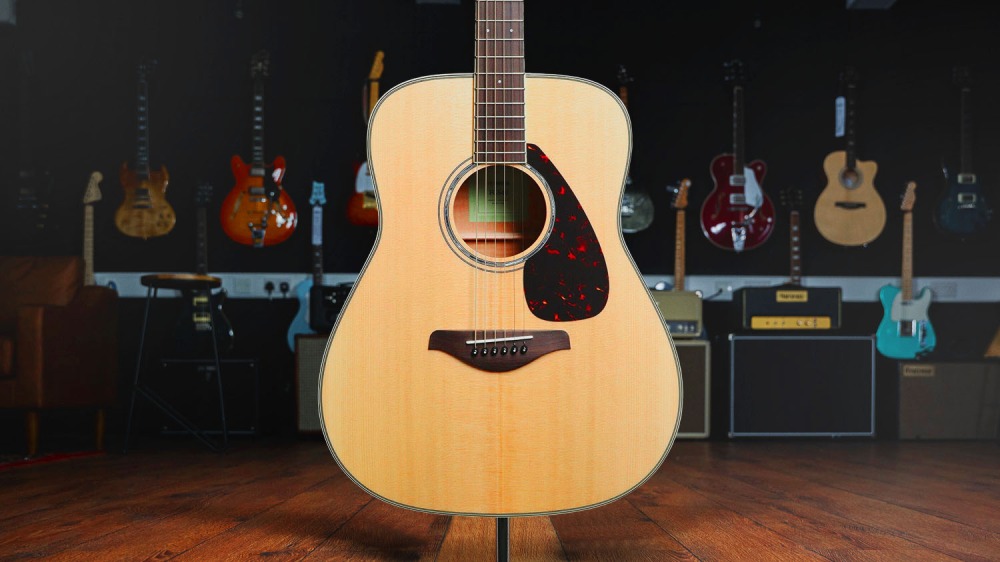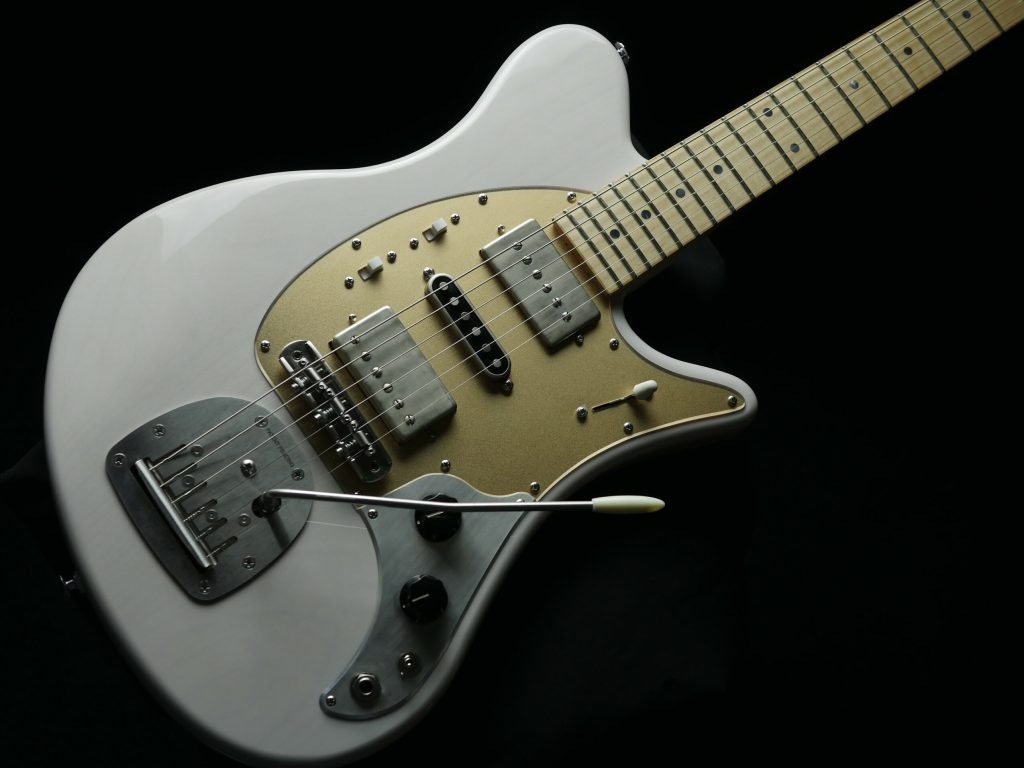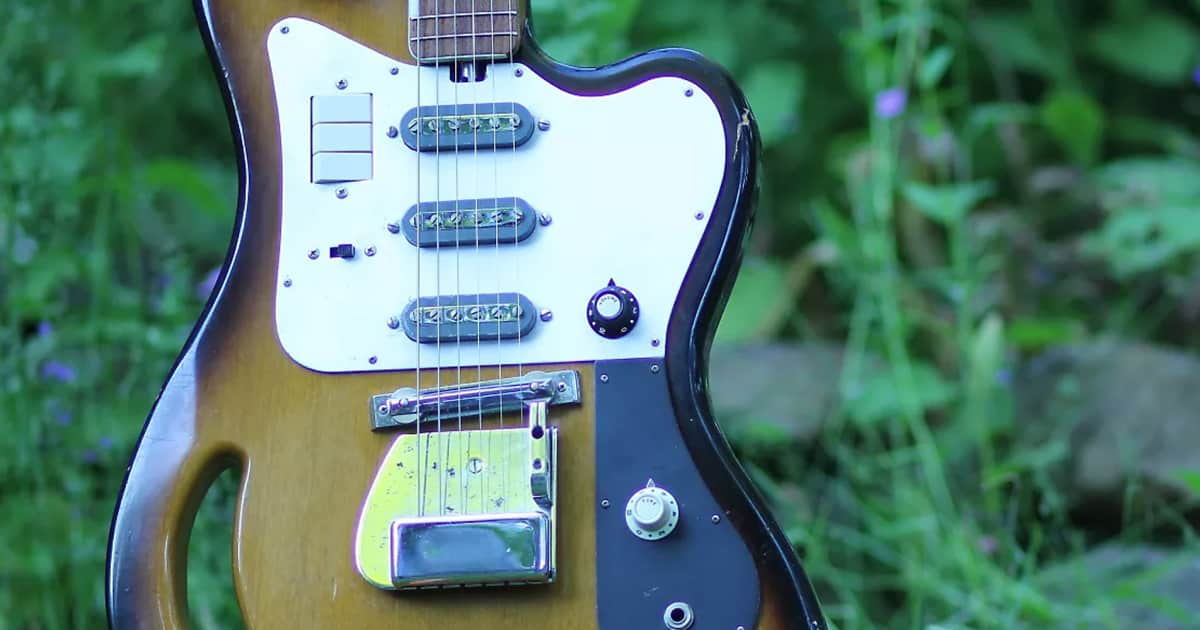Vintage Japanese guitars have become increasingly popular among musicians and collectors in recent years. These guitars, produced primarily in the 1960s and 70s, offer a unique combination of affordability, quality craftsmanship, and distinctive features that have made them highly sought after. From their unusual body shapes to their vibrant finishes and unique pickups, vintage Japanese guitars have left an indelible mark on the world of music.
One of the main reasons for the popularity of vintage Japanese guitars is their affordability. While vintage American guitars from the same era can fetch exorbitant prices, vintage Japanese guitars offer a more accessible option for musicians and collectors. This affordability has allowed a wider range of people to own and appreciate these instruments, contributing to their growing popularity.
In addition to their affordability, vintage Japanese guitars also offer a high level of quality craftsmanship. Japanese manufacturers were able to produce guitars that rivaled their American counterparts in terms of build quality and playability. This was due in part to the post-World War II economic boom in Japan, which allowed for investment in manufacturing processes and technology. The influence of American guitar brands also played a role, as Japanese manufacturers sought to replicate the success of iconic American models.
The rise of Japanese guitar manufacturing in the 1960s and 70s

The rise of Japanese guitar manufacturing in the 1960s and 70s can be attributed to several factors. After World War II, Japan experienced a period of rapid economic growth known as the “Japanese economic miracle.” This economic boom allowed for investment in various industries, including guitar manufacturing.
Japanese manufacturers were also heavily influenced by American guitar brands such as Fender and Gibson. These brands had established themselves as leaders in the industry, and Japanese manufacturers saw an opportunity to replicate their success. By studying American designs and manufacturing techniques, Japanese companies were able to produce high-quality guitars at a lower cost.
One of the most well-known Japanese guitar brands from this era is Teisco. Founded in 1948, Teisco quickly gained a reputation for producing affordable yet high-quality guitars. Their guitars featured unique body shapes and vibrant finishes, making them stand out from their American counterparts. Teisco guitars were popular among beginner musicians and were often sold through mail-order catalogs.
Another notable Japanese brand is Yamaha. Originally known for producing pianos and other musical instruments, Yamaha entered the guitar market in the 1960s. They quickly gained a reputation for producing high-quality instruments that were both affordable and reliable. Yamaha guitars were known for their solid construction and excellent playability, making them a favorite among professional musicians.
Ibanez is another brand that emerged during this period. Originally a Japanese guitar shop, Ibanez began producing their own guitars in the late 1960s. They gained recognition for their high-quality craftsmanship and attention to detail. Ibanez guitars were particularly popular among rock and metal musicians, thanks to their powerful pickups and fast-playing necks.
Brands to watch out for: Teisco, Yamaha, and more
When it comes to vintage Japanese guitars, there are several brands that collectors and musicians should keep an eye out for. One of the most iconic brands is Teisco, which produced a wide range of guitars from the 1950s to the 1970s. Teisco guitars are known for their unique body shapes, including the “tulip” and “shark fin” designs. They also feature vibrant finishes and distinctive pickups that contribute to their unique sound.
Yamaha is another brand that has made a significant impact on the vintage Japanese guitar market. While Yamaha is primarily known for their pianos and other musical instruments, they also produced a range of high-quality guitars in the 1960s and 70s. Yamaha guitars are known for their solid construction, excellent playability, and versatile sound. They offer a great option for musicians looking for a reliable and affordable vintage instrument.
Ibanez is another brand that has gained a strong following among collectors and musicians. Originally a guitar shop in Japan, Ibanez began producing their own guitars in the late 1960s. They quickly gained recognition for their high-quality craftsmanship and attention to detail. Ibanez guitars are particularly popular among rock and metal musicians, thanks to their powerful pickups and fast-playing necks.
Other notable Japanese guitar brands include Greco, Tokai, and Aria. These brands also produced high-quality instruments that are highly regarded among collectors and musicians. Greco guitars are known for their excellent craftsmanship and attention to detail. Tokai guitars are often considered some of the best replicas of vintage American models, offering a more affordable alternative to the originals. Aria guitars are known for their unique designs and innovative features, making them highly sought after by collectors.
The unique features of vintage Japanese guitars
One of the main reasons why vintage Japanese guitars have become so popular is their unique features. These guitars often feature unusual body shapes that set them apart from their American counterparts. From the “tulip” shape of Teisco guitars to the “explorer” shape of some Greco models, vintage Japanese guitars offer a distinctive aesthetic that appeals to many musicians and collectors.
In addition to their unique body shapes, vintage Japanese guitars also feature distinctive pickups. Many of these guitars were equipped with single-coil pickups that produced a bright and twangy tone. These pickups were often paired with unique switching systems that allowed for a wide range of tonal options. This versatility made vintage Japanese guitars popular among musicians in various genres, from surf rock to indie rock.
Another notable feature of vintage Japanese guitars is their vibrant finishes. While American guitars from this era often featured more traditional finishes such as sunburst or natural, Japanese manufacturers were not afraid to experiment with bold and eye-catching colors. Teisco guitars, in particular, are known for their vibrant finishes, which range from metallic blues and reds to psychedelic patterns. These finishes add to the visual appeal of these guitars and make them stand out on stage.
How to identify and evaluate vintage Japanese guitars
If you’re interested in purchasing a vintage Japanese guitar, it’s important to know how to identify and evaluate these instruments. Here are some tips to help you make an informed decision:
- Examine the hardware: Look closely at the hardware on the guitar, including the tuners, bridge, and pickups. Vintage Japanese guitars often feature unique hardware that can help you identify the brand and model. Pay attention to any markings or logos on the hardware.
- Check for originality: Vintage Japanese guitars are often modified or repaired over the years, so it’s important to check for originality. Look for any signs of replaced parts or repairs, such as new pickups or refinished bodies. Originality can have a significant impact on the value of a vintage guitar.
- Assess the overall condition: Take a close look at the overall condition of the guitar. Look for any signs of damage or wear, such as cracks, dents, or scratches. It’s also important to check the neck for any signs of warping or bowing. The condition of a vintage guitar can affect its playability and value.
- Research the model: Before purchasing a vintage Japanese guitar, take the time to research the specific model you’re interested in. Look for information about its history, features, and value. There are many online resources and forums dedicated to vintage Japanese guitars that can provide valuable information.
- Play the guitar: If possible, try playing the guitar before making a purchase. This will give you a sense of its playability and sound. Pay attention to how it feels in your hands and how it responds to your playing style. It’s important to find a guitar that suits your personal preferences and playing needs.
The affordability factor: Why vintage Japanese guitars are a great investment
One of the main reasons why vintage Japanese guitars have become so popular is their affordability. Compared to their American counterparts, vintage Japanese guitars offer a more accessible option for musicians and collectors. This affordability has allowed a wider range of people to own and appreciate these instruments, contributing to their growing popularity.
Vintage American guitars from the same era can fetch exorbitant prices, making them out of reach for many musicians and collectors. On the other hand, vintage Japanese guitars offer a more affordable alternative without sacrificing quality or craftsmanship. This affordability has made vintage Japanese guitars a great investment for musicians who want a high-quality instrument without breaking the bank.
In addition to their initial affordability, vintage Japanese guitars have also seen an increase in value over time. As their popularity has grown, so has their desirability among collectors. This increased demand has led to a rise in prices for certain models, making them a smart investment for those looking to buy and sell vintage guitars.
The impact of vintage Japanese guitars on modern music
Vintage Japanese guitars have had a significant impact on modern music, particularly in genres such as indie rock, shoegaze, and surf rock. These guitars offer a unique sound and aesthetic that has become synonymous with these genres.
In indie rock, vintage Japanese guitars are often favored for their bright and twangy tone. Bands such as The Strokes and Arctic Monkeys have used vintage Japanese guitars to create their signature sound. The unique pickups and switching systems found on these guitars allow for a wide range of tonal options, making them versatile instruments for indie rock musicians.
In shoegaze, vintage Japanese guitars are known for their ability to create lush and atmospheric sounds. Bands such as My Bloody Valentine and Slowdive have used vintage Japanese guitars to create their distinctive wall of sound. The combination of the guitars’ unique pickups and effects pedals creates a dreamy and ethereal tone that is characteristic of the genre.
In surf rock, vintage Japanese guitars are highly sought after for their ability to produce the twangy and reverb-drenched tones that define the genre. Bands such as The Ventures and Dick Dale popularized the use of vintage Japanese guitars in surf rock, and their influence can still be heard in modern surf rock bands.
The collector’s market for vintage Japanese guitars
The collector’s market for vintage Japanese guitars has grown significantly in recent years. As these guitars have become more popular among musicians and collectors, their desirability and value have increased.
Certain models and brands are particularly sought after by collectors. For example, Teisco guitars from the 1960s are highly regarded for their unique body shapes and vibrant finishes. Yamaha SG models from the 1970s are also highly sought after for their solid construction and versatile sound.
The rarity of certain models can also drive up their value. Some vintage Japanese guitars were produced in limited quantities or were only available in certain regions, making them harder to find and more desirable among collectors. These rare models can command higher prices on the collector’s market.
For collectors looking to acquire vintage Japanese guitars, there are several avenues to explore. Online marketplaces such as eBay and Reverb offer a wide selection of vintage guitars, including many from Japan. Guitar shops and pawn shops can also be a good source for finding vintage Japanese guitars, as they often have a rotating inventory of used instruments. Finally, attending guitar shows and auctions can provide an opportunity to find rare and collectible guitars.
Where to find vintage Japanese guitars: Tips for searching online and in person

If you’re looking to find a vintage Japanese guitar, there are several avenues you can explore. Here are some tips for searching online and in person:
- Online marketplaces: Websites such as eBay and Reverb offer a wide selection of vintage Japanese guitars. These platforms allow you to search by brand, model, and price range, making it easier to find the specific guitar you’re looking for. It’s important to read the descriptions and look at the photos carefully to ensure that the guitar is in good condition and matches your expectations.
- Guitar shops and pawn shops: Local guitar shops and pawn shops can be a great source for finding vintage Japanese guitars. These establishments often have a rotating inventory of used instruments, including vintage models. It’s a good idea to call ahead and ask if they have any vintage Japanese guitars in stock before visiting.
- Guitar shows and auctions: Attending guitar shows and auctions can provide an opportunity to find rare and collectible vintage Japanese guitars. These events often attract sellers who specialize in vintage instruments, offering a wide selection to choose from. It’s important to do your research beforehand and set a budget to ensure that you’re getting a fair price.
When searching for vintage Japanese guitars, it’s important to be patient and persistent. These guitars can be harder to find compared to more common brands, so it may take some time to find the specific model you’re looking for. It’s also important to be cautious when buying online, as there is a risk of purchasing a counterfeit or misrepresented instrument. Take the time to research the seller and ask for additional photos or information if needed.
Conclusion: Celebrating the legacy of vintage Japanese guitars
In conclusion, vintage Japanese guitars have become increasingly popular among musicians and collectors due to their unique features, affordability, and impact on modern music. These guitars offer a combination of quality craftsmanship, distinctive aesthetics, and versatile sound that has made them highly sought after.
The rise of Japanese guitar manufacturing in the 1960s and 70s was fueled by the post-World War II economic boom in Japan and the influence of American guitar brands. Japanese manufacturers were able to produce high-quality guitars at a lower cost, making them more accessible to a wider range of people.
Vintage Japanese guitars are known for their unique features, including unusual body shapes, distinctive pickups, and vibrant finishes. These features contribute to their appeal among musicians and collectors, who appreciate the visual and sonic character of these instruments.
When searching for vintage Japanese guitars, it’s important to know how to identify and evaluate these instruments. Examining the hardware, checking for originality, and assessing the overall condition are all important factors to consider. It’s also important to do your research and seek out reputable sellers to ensure that you’re getting an authentic instrument.
Vintage Japanese guitars offer an affordable option for musicians and collectors who want a high-quality instrument with a unique history. Their impact on modern music cannot be overstated, as they have influenced genres such as indie rock, shoegaze, and surf rock. Whether you’re a musician looking for a reliable and versatile instrument or a collector looking for a valuable investment, vintage Japanese guitars offer a world of possibilities to explore.
